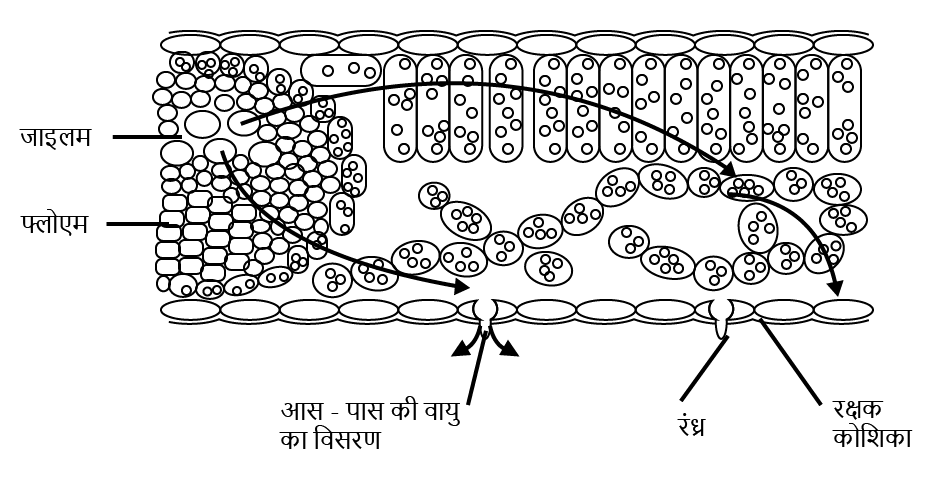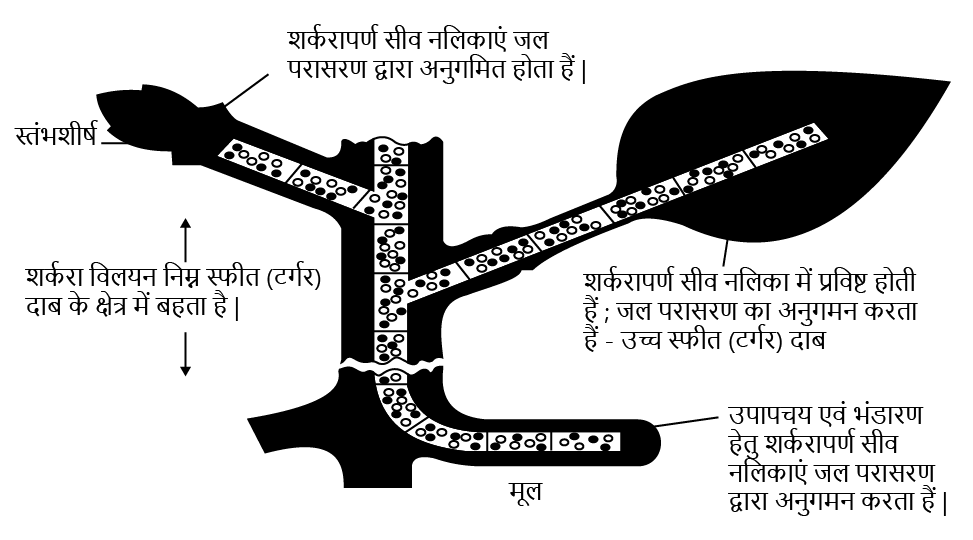Solved NCERT Questions For Class 11 Biology Chapter 11 In Hindi - Free PDF
FAQs on NCERT Solutions For Class 11 Biology Chapter 11 Transport In Plants in Hindi - 2025-26
1. Where can I find accurate and step-by-step NCERT Solutions for Class 11 Biology Chapter 11, Transport in Plants?
You can find comprehensive and expert-verified NCERT Solutions for Class 11 Biology Chapter 11 on Vedantu. These solutions are prepared by subject matter experts and strictly follow the latest CBSE 2025-26 syllabus. Each answer provides a detailed, step-by-step explanation to help you understand core concepts like water potential and the pressure-flow hypothesis, ensuring you can solve all textbook exercises correctly.
2. What is the correct method to answer questions on the mass flow hypothesis in the NCERT exercise?
To correctly answer questions on the pressure-flow or mass flow hypothesis as per the NCERT solutions framework, your answer must be structured. First, define the hypothesis as the accepted mechanism for the translocation of sugars from source to sink. Then, explain the key steps involved in a sequence:
- Sugar loading at the source (e.g., leaves) creates a hypertonic condition in the phloem sieve tubes.
- Water moves from the adjacent xylem into the phloem via osmosis, building up high turgor pressure.
- This hydrostatic pressure gradient drives the bulk flow of phloem sap towards the sink.
- At the sink (e.g., roots), sugar is actively unloaded, the water potential increases, and water moves back into the xylem.
3. Why is understanding water potential critical before solving numerical problems in Chapter 11?
Understanding water potential (Ψw) is fundamentally crucial because it is the concept that dictates the direction of water movement. Before attempting numericals, you must be clear that water always moves from a region of higher water potential to a region of lower water potential. The NCERT solutions demonstrate how to correctly apply the formula Ψw = Ψs + Ψp (water potential = solute potential + pressure potential) to determine the direction of water flow between cells, which is a common type of problem in this chapter's exercises.
4. How do the NCERT Solutions explain the difference between apoplast and symplast pathways for water absorption?
The NCERT Solutions clarify the difference between these two pathways for water movement in roots by focusing on the physical route of transport:
- The apoplast pathway involves water moving through the non-living parts of the root, which includes the cell walls and intercellular spaces. It is a faster process but is crucially blocked at the endodermis by the waterproof Casparian strips.
- The symplast pathway involves water moving from cell to cell through their cytoplasm, interconnected by plasmodesmata. This is a slower, metabolically-regulated process as water must cross cell membranes.
5. What common mistakes do students make when solving questions on transpiration pull, and how do expert solutions help avoid them?
A common mistake is failing to correctly link the three key properties of water responsible for the cohesion-tension or transpiration pull theory. Expert-verified NCERT solutions for this chapter guide students to structure their answers by clearly explaining:
- Cohesion: The strong mutual attraction between water molecules that holds the water column together.
- Adhesion: The attraction of water molecules to the polar surfaces of the xylem vessels, which helps support the water column against gravity.
- Surface Tension: The property that gives water high tensile strength in the narrow xylem tubes, allowing it to resist a pulling force.
6. How should I approach solving a question that asks to differentiate between guttation and transpiration, as per the NCERT pattern?
When tackling questions that compare guttation and transpiration, the NCERT solutions approach is to create a clear comparison table or use distinct points. Your solution should highlight these key differences for maximum clarity:
- Form of Water Loss: Guttation is the loss of water as liquid droplets, while transpiration is water loss as vapour.
- Time of Occurrence: Guttation happens at night or in the early morning when root pressure is high. Transpiration occurs mainly during the day when stomata are open.
- Exit Point: Water is lost through specialized pores called hydathodes in guttation, but through stomata in transpiration.
- Driving Force: Guttation is driven by positive root pressure, whereas transpiration is a passive process driven by the transpiration pull.




























